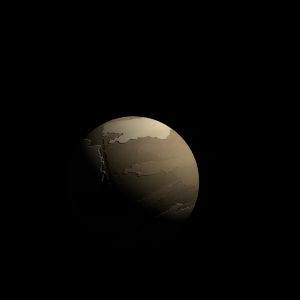|
|
Space Astro
|
Info for exoplanet "Lapro"
| Scientific (actual) data |
|---|
| Name | GJ 1132 c |
| Planet status | Confirmed |
| Mass sini | 0.00831 |
| Orbital period | 8.929 |
| Semi major axis | 0.0476 |
| Orbit eccentricity | 0.27 |
| Discovered | 2018 |
| Updated | 2019-06-26 |
| K | 2.57 |
| Temperature (kelvin) | 579 |
| Publication | Published in a refereed paper |
| Detection type | Radial Velocity |
| Mass measurement type | Radial Velocity |
| Star name | GJ 1132 |
| Right ascension | 153.72° |
| Declination | -47.16° |
| Mag v | 13.5 |
| Star distance | 12.04 |
| Star metallicity | -0.12 |
| Star mass | 0.181 |
| Star radius | 0.207 |
| Star sp type | M3.5 |
| Star age | 5 |
| Star temperature | 3270 |
| Wikipedia article | GJ 1132 c |
Back
| |
| Fictional info (?) |
|---|
| Suggested name | Lapro |
| Planet type | Warm planet |
| Its orbital period around GJ 1132 of 8.9 earth days is the shortest of all the planets in its solar system.
The smooth Borealis basin in the northern hemisphere covers 25 percent of the planet and may be a giant impact feature. |
| Atmosphere | Nitric oxide | 76% |
| Carbonyl sulfide | 14% |
| Argon | 6.6% |
| Ammonia | 2.4% |
| Carbon monoxide | 0.19% |
| Xenon | 0.18% |
| Atmospheric pressure | 1.9 bar |
 |
| No known satellites |
| Google search for Lapro |
|
Website by Joachim Michaelis
|
|
|
|